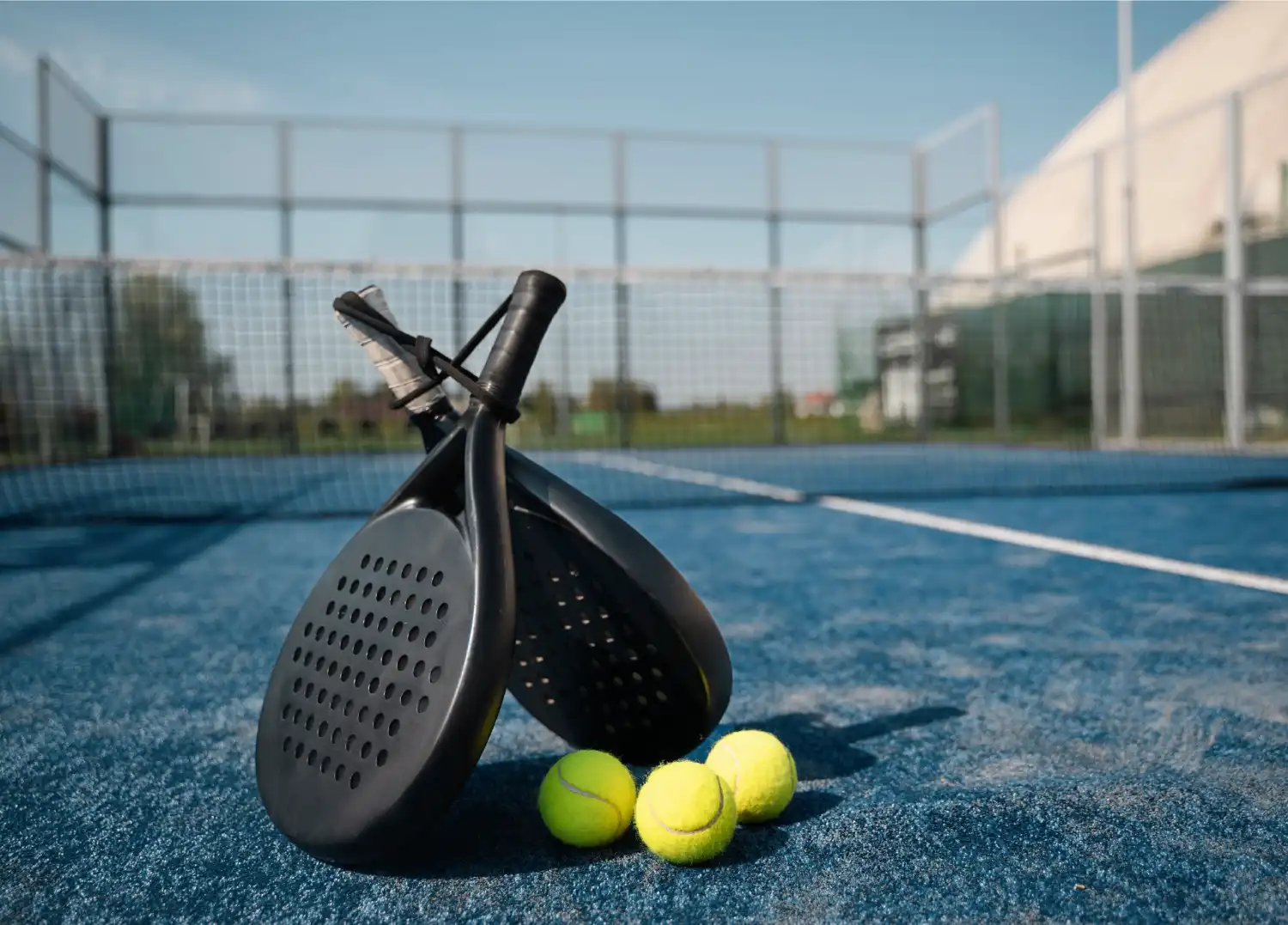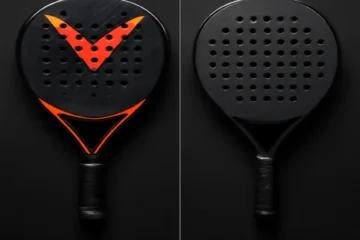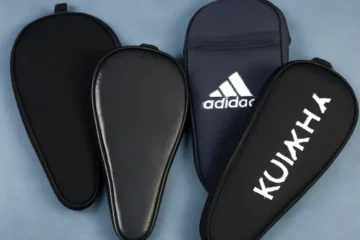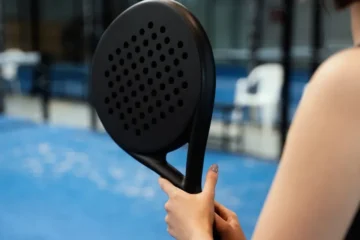If you’ve recently discovered the addictive sport of padel, you’ve probably realized one thing very quickly: your racket is your best friend on the court. It’s more than just a piece of equipment—it’s an extension of your arm, dictating how much control, power, and comfort you’ll have in every rally.
But here’s the problem: walk into any sports shop or browse an online store, and you’ll face hundreds of padel rackets in different shapes, weights, and materials. For beginners and even intermediate players, the choice can feel overwhelming.
That’s exactly why we created this guide. By the end, you’ll understand what really matters when choosing a racket, how to match it to your playing style, and which trends are shaping the 2025 padel market.
And remember: there’s no “best racket” for everyone. The best racket is the one that matches YOUR style, level, and physical needs.
1. Understanding the Anatomy of a Padel Racket
Before you choose, you need to know what makes one racket different from another. Three core factors—shape, core material, and face material—have the biggest impact on performance.
1.1. Shape: The Foundation of Your Game
The shape of a padel racket determines where the sweet spot is and how much control or power you’ll get.
- Round Shape
- Sweet Spot: Large, centered.
- Strengths: Maximum control and maneuverability.
- Best For: Beginners, defensive players, or those who value consistency and placement.
- Example Use: Quick volleys at the net or precise lobs.
- Teardrop Shape
- Sweet Spot: Medium-high, offering balance.
- Strengths: Great mix of power and control.
- Best For: Intermediate players who want versatility.
- Example Use: Players who defend well but also attack when the chance arises.
- Diamond Shape
- Sweet Spot: Smaller, located high on the racket.
- Strengths: Maximum power, less forgiving.
- Best For: Advanced, attacking players who like finishing points with smashes.
- Example Use: Aggressive overhead shots like viboras or smashes.
1.2. Core Material: What’s Inside Matters
The core foam determines the feel, comfort, and explosiveness of your racket.
- EVA Soft
- Softer, absorbs vibrations.
- Offers more control and comfort.
- Ideal for players with sensitive arms or those prioritizing precision.
- EVA Hard
- Denser and more rigid.
- Provides explosive power but less forgiveness.
- Suited for aggressive, experienced players.
- EVA HR3 (Multi-Density)
- The new standard in 2025.
- Layers of different densities for a balanced response.
- Adapts to different shots—soft feel for defense, firm response for attack.
1.3. Face Material: The Outer Layer
The surface material impacts durability, spin, and power.
- Fiberglass
- Flexible, softer touch.
- Prioritizes comfort and control over raw power.
- Best for beginners and players with arm concerns.
- Carbon Fiber
- Stiff and reactive.
- Generates more power and precision.
- Preferred by competitive and attacking players.
- Carbon & Fiberglass Mix
- Offers a middle ground.
- Balanced feel—slightly more powerful than fiberglass, more forgiving than pure carbon.
- Popular choice for all-round rackets.
2. Know Your Player Profile: Matching the Racket to Your Game
Now that you know the components, the next step is matching the racket to your player type. Think of this as a personality test for your padel style.
2.1. The Beginner / Control Player
- Profile: Just learning, focusing on consistency, technique, and placement.
- Recommended Specs:
- Shape: Round
- Core: EVA Soft
- Face: Fiberglass
- Why It Works: Maximum forgiveness, larger sweet spot, and comfort that helps you avoid injuries while learning.
2.2. The Intermediate / All-Round Player
- Profile: Comfortable with basics, wants a racket that performs well in both defense and attack.
- Recommended Specs:
- Shape: Teardrop
- Core: EVA HR3 / Medium
- Face: Carbon & Fiberglass Mix
- Why It Works: Provides the balance needed to develop a versatile, all-court game.
2.3. The Advanced / Power Player
- Profile: Aggressive style, finishing points with smashes and attacking volleys.
- Recommended Specs:
- Shape: Diamond
- Core: EVA Hard
- Face: Carbon Fiber
- Why It Works: Designed for maximum power and precision, ideal for experienced offensive players.
2.4. Players with Arm Problems (Tendinitis, etc.)
- Profile: Players sensitive to vibrations, recovering from injury, or wanting to reduce strain.
- Recommended Specs:
- Shape: Round
- Core: EVA Soft
- Face: Fiberglass
- Weight: On the lighter side (355–365g).
- Why It Works: Prioritizes comfort and shock absorption, reducing stress on joints.
3. Key Technical Specs You MUST Consider
Beyond shape and materials, there are other critical details that impact playability.
3.1. Weight & Balance
- Weight Range:
- Light (355–365g): Easier to maneuver, less strain on the arm.
- Heavy (370–375g): More powerful, but harder to control.
- Balance:
- Head-Light (Low Balance): Better control, faster reactions at the net.
- Head-Heavy (High Balance): More power, useful for strong smashes.
- Even Balance: Balanced feel, good for all-rounders.
3.2. Handle Size and Grip
A correct grip size prevents injuries and improves control.
- How to Measure: Hold the racket as if playing. If you can fit your index finger between your fingers and palm, the grip size is correct.
- Overgrips: Useful for customizing grip size, improving comfort, and absorbing sweat. Many players use 2–3 overgrips to get the perfect feel.
4. The 2025 Padel Market: Trends and Top Brands
Padel has exploded globally, and 2025 brings exciting innovations. Here’s what you should know:
4.1. Sustainability Trends
- Brands like Adidas and Nox are using recycled carbon fiber and eco-friendly resins.
- Expect more rackets designed with lower carbon footprints.
4.2. Smart Rackets
- Some manufacturers are integrating sensors that track swing speed, sweet spot usage, and shot stats.
- While still niche, they’re gaining traction in 2025 for performance analysis.
4.3. Customization
- Players now want personalized rackets—from weight adjustments to custom colors and designs.
- Brands like Bullpadel and Siux offer bespoke options.
4.4. Top Brands to Watch
- Bullpadel: Known for innovation and top pro-player endorsements.
- Nox: Popular for versatile rackets with excellent feel.
- Adidas: Strong in sustainability and balanced designs.
- Head: Offers excellent all-round rackets.
- Wilson: Great for beginners and intermediate players.
- Siux & Varlion: Premium brands with high-quality, power-focused rackets.
5. Final Checklist & Pro Tips Before You Buy
Choosing your racket is exciting, but don’t rush. Keep this checklist in mind:
- Try Before You Buy: Borrow from a friend or test demo rackets if possible.
- Set a Budget:
- Beginners: $100–$150
- Intermediate: $150–$200
- Advanced: $200+
- Inspect the Racket: Check for defects or irregularities before purchase.
- Don’t Forget the Extras: A racket cover, overgrips, and even a dampener can make a big difference.
Conclusion
Choosing the right padel racket in 2025 comes down to three key things: Shape, Core, and Face. Match these to your player profile, and you’ll unlock your best game.
Remember:
- Beginners: Go round, soft, and forgiving.
- Intermediates: Teardrop, balanced core, hybrid face.
- Advanced: Diamond, hard, and carbon for raw power.
At the end of the day, there’s no single “perfect racket” for everyone—only the one that’s perfect for YOU. With this guide, you now have the knowledge to make a confident, informed choice.
FAQs: How to Choose the Right Padel Racket (2025 Edition)
1. What is the best padel racket shape for beginners?
Round-shaped rackets are best for beginners because they have a larger sweet spot, offer maximum control, and are more forgiving on mistakes.
2. Should I choose a light or heavy padel racket?
Lighter rackets (355–365g) are easier to handle and better for control, while heavier rackets (370–375g) provide more power but require stronger technique.
3. What is the difference between fiberglass and carbon fiber rackets?
Fiberglass offers more comfort and control, making it great for beginners. Carbon fiber is stiffer and generates more power, ideal for advanced players.
4. What padel racket is best for players with arm injuries?
A round racket with an EVA Soft core and fiberglass face is the most comfortable option, as it reduces vibrations and strain on the elbow and shoulder.
5. How much should I spend on my first padel racket?
Beginners should aim for $100–$150, intermediates $150–$200, and advanced players $200+. More expensive rackets often feature premium materials and better durability.
6. Are smart padel rackets worth it in 2025?
Smart rackets with built-in sensors are becoming popular for tracking performance, but they’re not essential. Beginners and casual players don’t need them yet.
7. Can I use the same racket for both control and power?
Yes. A teardrop-shaped racket with a medium-density core and a carbon/fiberglass mix face offers the best balance of power and control.
8. How do I know my grip size is correct?
If you can fit your index finger between your fingers and palm while holding the racket, your grip size is correct. Overgrips can fine-tune the fit.




